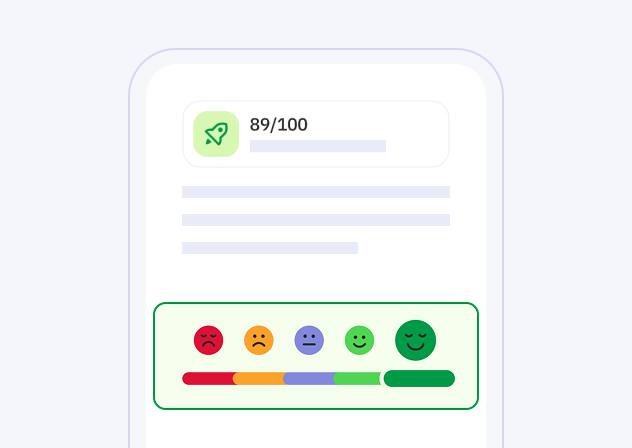Spanish Slang: A Guide to Speak Like a Local
Have you ever found yourself lost in translation while traveling through Spanish-speaking countries, even though you’ve got the basics of Spanish down pat? If so, you’re not alone. The key to unlocking the true essence of everyday conversation lies in the colorful, expressive, and often confusing world of Spanish slang. In this deep dive, we’ll explore the intricacies of Spanish slang and arm you with the colloquial words and phrases that will help you blend in with the locals. First off, let’s get one thing clear: Spanish slang is not universal. The words and phrases used informally in Spain can be bewilderingly different from those in Mexico, Argentina, or Peru. This diversity is a testament to the rich cultural tapestry of the Spanish-speaking world, but it can also be a bit of a minefield for language learners. Fear not, intrepid linguist, for we have got your back!

The most efficient way to learn a language
Try Talkpal for freeSpanish Slang
1. Spain: Where “Guay” Means Cool and “Chaval” Means Kid
In temperate Spain, the streets buzz with slang that’s as fashionable as their Mediterranean lifestyle. “Guay” is equivalent to “cool” and is used to describe anything from a trendy bar to a stylish outfit. If you find yourself in a youthful crowd, you might hear the term “chaval” or “chavala,” referring to a boy or a girl, respectively. These are akin to “kid” or “dude” in English.
Speaking of cool, if you’re trying to express that you’re having a great time, “estar de miedo” literally translates to “to be of fear,” but it actually means you’re having a phenomenal time. Isn’t the juxtaposition just fascinating?
2. Mexico: Chilling with “Carnal” and “Chido”
Cross the Atlantic to Mexico, and you’ll need a whole new slang dictionary. Your “amigo” (friend) becomes “carnal,” a word deriving from “carne” (flesh), signifying a bond as close as flesh and blood. Meanwhile, “chido” is your go-to word for anything awesome.
Also, don’t be thrown off if you hear food-related slang. For instance, if someone says “¡Qué padre!”, they’re not talking about their father, they’re exclaiming how great something is — and let’s be real, isn’t Mexican food truly “¡Qué padre!”?
3. Argentina: Dancing Through Slang with “Che” and “Copado”
In the land of tango, Argentinians sprinkle their Spanish with distinctive words that set them apart. “Che,” possibly the most iconic Argentine slang word, is a term of address akin to “hey” or “mate.” “Copado” may sound like something out of a cop show, but it’s actually used to describe something cool or fantastic.
Argentinians also have a sweet spot for lunfardo, a local slang originating from the Buenos Aires underworld. So if someone is talking about “mangoes,” they might not be craving fruit; they might just be referring to money!
4. Colombia: Where “Bacano” is Breathtakingly Cool
Down in Colombia, they have their own spin on what’s cool, with “bacano” serving as a seal of approval for anything impressive. You might also encounter “parce” or “parcero,” the Colombian word for “friend.”
If someone tells you they are “engallado,” they’re not turning into a rooster (despite the literal translation being “to be like a rooster”) — they’re just decked out in their best clothes, ready to impress.
5. Peru: “Jato” and Other Peruvian Peculiarities
Venture to Peru, and your crash pad becomes your “jato.” This term possibly comes from the English “jet” back in the days when American pilots found themselves in Lima, looking for a place to crash.
And when it comes to hanging out, Peruvians may use “pata” to refer to a friend, which curiously also means “leg.” It’s yet another delightful example of how slang can take unexpected twists and turns!
Bridging the Gap: Navigating Slang with Sensibility and Respect
Spanish slang isn’t just about spicing up your language skills; it’s a gateway to deeper cultural understanding. However, it’s important to use slang sensibly and with respect. Remember, slang can sometimes include terms that are insensitive or inappropriate in certain contexts. Always observe how locals use slang and follow suit.
It’s also worth noting that the immersion into Spanish slang is an ongoing journey. Languages evolve, and so does slang. What’s “chévere” (cool) today might be passé tomorrow.
In conclusion, embracing Spanish slang is instrumental in bridging the gap between being a mere Spanish speaker and becoming a true comunicador, someone who connects authentically with the local culture. So next time you strike up a conversation in Spanish, sprinkle in some slang and watch the magic happen. Not only will your language skills flourish, but you’ll also earn a nod of recognition — and likely a smile — from your Spanish-speaking amigos. ¡Qué guay!
The most efficient way to learn a language
Try Talkpal for freeFrequently Asked Questions
Why is Spanish slang so hard to master despite knowing basic Spanish?
Are slang expressions the same throughout all Spanish-speaking countries?
What are some common slang terms for "friend" in different Spanish-speaking countries?
Can Spanish slang words lead to confusion for language learners?
How can I learn Spanish slang effectively when traveling?
The talkpal difference

Immersive conversations
Each individual learns in a unique way. With Talkpal technology, we have the ability to examine how millions of people learn simultaneously and design the most efficient educational platforms, which can be customized for each student.

Real-time feedback
Receive immediate, personalized feedback and suggestions to accelerate your language mastery.

Personalization
Learn via methods tailored to your unique style and pace, ensuring a personalized and effective journey to fluency.







